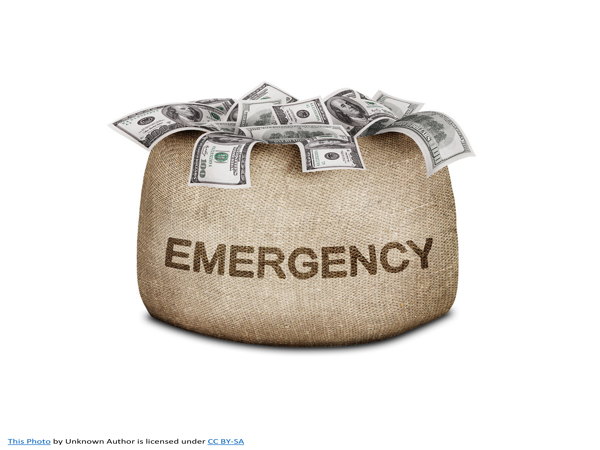In the world of entrepreneurship, unforeseen challenges and emergencies are an inevitable part of running a business. Whether it’s an unexpected equipment breakdown, a sudden drop in sales, or an economic downturn, having a safety net in place is crucial for ensuring your business's stability and longevity. A business emergency fund is not just a financial cushion; it's a vital strategy for maintaining operations and navigating crises smoothly. Here’s why you should create a business emergency fund and how to go about establishing one effectively.
1. Cushion Against Financial Disruptions
Reason: An emergency fund provides a financial buffer to help your business weather unexpected disruptions without immediate strain.
Steps to Implement:
- Determine the Amount Needed: Calculate the amount of money you’ll need to cover essential expenses for 3-6 months, including rent, utilities, and salaries.
- Open a Separate Account: Set up a dedicated savings account specifically for your emergency fund to ensure it’s easily accessible but separate from your regular operating funds.
Example: A small manufacturing business faces a sudden machinery breakdown. With an emergency fund in place, they can afford to repair or replace the machinery without jeopardizing their operations or incurring debt.
2. Maintain Business Operations During Downturns
Reason: During economic downturns or periods of low cash flow, an emergency fund helps you keep operations running smoothly without significant cuts or layoffs.
Steps to Implement:
- Analyze Historical Data: Review past financial performance to estimate potential downturn scenarios.
- Create a Budget: Develop a budget that allocates a portion of your revenue to your emergency fund each month.
Example: A retail store experiences a slow season and lower sales. The emergency fund allows them to cover operational costs such as staff wages and rent, helping them maintain stability until business picks up again.
3. Reduce Financial Stress
Reason: Knowing you have a financial safety net can significantly reduce stress and provide peace of mind, allowing you to focus on growing your business rather than worrying about potential crises.
Steps to Implement:
- Set Realistic Savings Goals: Determine a manageable savings goal and set aside a portion of your profits regularly to build your emergency fund.
- Track Progress: Monitor your savings progress and adjust your budget as needed to stay on track.
Example: A freelance consultant experiences fluctuating income. Having an emergency fund helps ease the financial pressure during lean months, allowing them to concentrate on securing new clients and expanding their services.
4. Avoid Taking On High-Interest Debt
Reason: An emergency fund can prevent the need to take on high-interest loans or credit card debt when faced with unexpected expenses.
Steps to Implement:
- Assess Your Funding Sources: Evaluate existing credit lines and loans to understand their terms and interest rates.
- Prioritize Emergency Fund Savings: Allocate funds to your emergency savings before considering additional borrowing.
Example: A tech startup faces unexpected legal fees. By drawing from their emergency fund, they avoid high-interest loans or credit cards, preserving their financial health and maintaining better cash flow.
5. Enhance Business Resilience
Reason: A well-stocked emergency fund contributes to your business’s overall resilience, making it easier to adapt to and recover from unforeseen challenges.
Steps to Implement:
- Build a Comprehensive Plan: Develop a contingency plan outlining how your emergency fund will be used in various scenarios.
- Review and Adjust Regularly: Periodically assess your fund to ensure it remains adequate for your evolving business needs.
Example: An event planning company encounters last-minute venue cancellations. Their emergency fund allows them to quickly secure an alternative location and fulfill client commitments without disruption.
6. Provide Flexibility for Opportunities
Reason: Having an emergency fund not only helps you handle crises but also provides flexibility to seize unexpected opportunities, such as a sudden investment or a strategic partnership.
Steps to Implement:
- Identify Potential Opportunities: Consider possible scenarios where having extra funds could be advantageous.
- Allocate a Portion for Opportunities: Reserve a portion of your emergency fund for such opportunities while maintaining the core amount needed for emergencies.
Example: A small food business has an opportunity to purchase bulk inventory at a discounted rate. Their emergency fund enables them to take advantage of the offer without compromising their financial stability.
7. Strengthen Credibility with Lenders
Reason: A strong emergency fund demonstrates financial responsibility and stability, which can enhance your credibility when seeking loans or credit from lenders.
Steps to Implement:
- Document Your Savings: Keep detailed records of your emergency fund and how it contributes to your financial stability.
- Communicate with Lenders: Inform potential lenders of your emergency fund and its role in your overall financial strategy.
Example: A startup seeking additional funding highlights their well-managed emergency fund to lenders, showcasing their preparedness and reducing perceived risk.
8. Prepare for Seasonal Variations
Reason: For businesses affected by seasonal fluctuations, an emergency fund helps manage cash flow during off-peak periods.
Steps to Implement:
- Analyze Seasonal Trends: Review past financial data to identify periods of high and low revenue.
- Build a Season-Specific Fund: Set aside additional funds during peak seasons to cover expenses during off-peak times.
Example: A landscaping business experiences high demand in spring and summer but slower business in winter. Their emergency fund helps cover expenses during the off-season, ensuring year-round financial stability.
9. Ensure Business Continuity
Reason: An emergency fund supports business continuity by ensuring that essential operations can continue without interruption during financial crises.
Steps to Implement:
- Identify Essential Expenses: List critical expenses necessary for maintaining operations, such as utilities, payroll, and lease payments.
- Align Fund Allocation: Ensure your emergency fund is sufficient to cover these essential expenses during emergencies.
Example: A daycare center faces unexpected repairs. Their emergency fund covers the costs, allowing them to remain operational and continue providing services to families.
10. Build Long-Term Financial Health
Reason: Regular contributions to an emergency fund promote long-term financial health and stability, setting a solid foundation for future growth and success.
Steps to Implement:
- Develop a Savings Plan: Create a plan for consistent contributions to your emergency fund, adjusting as your business grows.
- Reinvest Surplus: Use any surplus funds to further strengthen your financial position or invest in business growth opportunities.
Example: A growing software company sets aside a percentage of profits into their emergency fund, gradually building a robust financial cushion that supports their long-term expansion goals.

.jpg)









